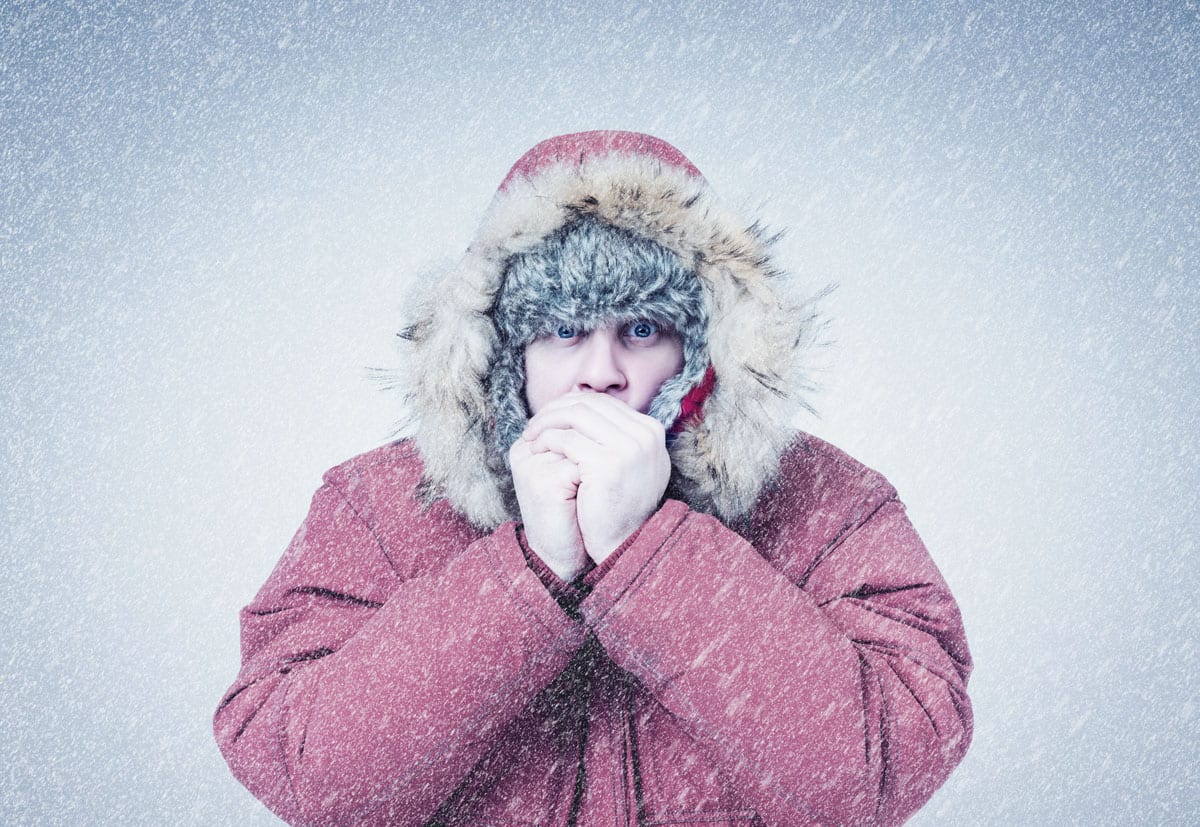
Chicago and the rest of the Midwest are facing a dangerous drop in temperatures this week—the mercury is predicted to plunge as far down as -55F as the coldest airmass in three and a half decades hits the region.
Wisconsin, Michigan and Chicago have all declared a state of emergency, and weather forecasters are issuing dire warnings of lung damage and freezing flesh without proper attire.
Although the worst of the cold snap will be over the north-central region of the U.S., practically the entire eastern two-thirds of the nation will see freezing temperatures, all the way down to central Florida. That’s nearly 200 million people who will be affected.
The harsh cold doesn’t disprove global warming however. Extremes of temperature are actually an indication of the impact of climate change. As a whole, the earth’s temperature is about one degree above the average right now, according to the University of Maine’s Climate Reanalyzer.
If you find yourself in one of the areas affected by the polar vortex, follow these tips to stay safe and warm.
1. Choose the right coat
Sub-zero days are not the time to wear your nice coats. Leave your pea coats and other thin jackets in the closet and opt for a down coat instead. Down coats provide the best heat retention, so they’re your best choice during a week like this one. Down jackets are measured on a scale from 400 to 900 that indicates the quality of the insulation. The higher the number, the warmer the coat will be.
2. Pick the best boots
When stepping out on a sub-zero day, it’s important to take that step in the warmest possible boots. The extremities of the body, such as fingers, toes, ears, nose and lips, are the most likely to be affected by frostbite, making your footwear choice even more important.
If you’re looking for a quality winter boot, the best thing to keep your eye on is the amount of insulation. Synthetic insulation is measured in either millimetres or grams. A higher number means the boot has more insulation and will be warmer and more comfortable. It’s also worth checking if the lining of your boot is removable so it can be taken out and hung up to dry in case it gets wet.
3. Hats, gloves and scarves
Up to 45 percent of body heat escapes through the head and chest, so make sure you’re wearing a warm hat and have a scarf or a coat that zips up to your chin. Protect your hands from frostbite with warm gloves or consider wearing mittens, which are an even better choice at a time like this.
4. Cover your face
This week, it’s important to give up on all pretenses of fashion and instead cover your entire body with cold-weather gear—including your face. When the temperature drops significantly below zero, you need to protect your lungs from the cold air by wearing a balaclava or buff face mask over your mouth. This will warm the air before it enters your lungs, preventing damage from the extreme cold.
5. Layer after layer
Underneath your hat, scarf, gloves and balaclava, make sure you are dressing in layers! Wear thermal underwear under your pants and sweaters. The air trapped between each layer holds your body heat, helping you stay warm. Layers also give you more control over regulating your body temperature, which will help you avoid sweating—something that can be dangerous at these low temperatures.
6. Stay hydrated
Severe cold can be just as dangerous as severe heat! Stay hydrated by drinking lots of hot tea. Pro tip: Alcohol does not keep you warm and will just contribute to your further dehydration.
7. Dogs get cold too
If it’s too cold for you outside, it’s probably too cold for your pet as well. Limit your pets’ time outdoors this week as much as you can. If you have to take them outside, consider bundling your pet up with a coat or sweater. It may seem silly but dressing your dog in booties when they go outside will not only keep their paws warm, but also prevent salt, sand and chemicals from irritating your pup’s paws.
When it is really cold outside, pets burn more calories, so leave them a little more food than normal. And make sure they drink a lot of water to prevent their skin from getting too dry.
8. Protect your pipes
Leave your faucets on a very slow drip and open the cabinet doors under the sink to prevent pipes from freezing overnight.
9. Care for your car
To avoid shuffling out of the house and discovering a cold, dead vehicle that won’t turn over, keep the gas tank at least half full and consider using coolant with antifreeze protection down to the lowest temperature. Also, try starting your car 15 minutes before you have to drive to let it properly warm up.
When it’s extremely cold, it’s important to make sure your vehicle is in top shape—including checking the battery, tire pressure, oil levels and windshield wipers. And it’s a good idea to pack a winter emergency kit with a blanket, boots, flashlight, extra batteries, ice scraper and jumper cables in your trunk as well.
Additionally, take the time to properly brush off and scrape your windshield before hitting the road. Don’t be a peephole driver—one of those people who think it is okay peek out the windshield through a tiny hole in the frost. You know who you are.
10. Finally, trust that you will be able to survive this
Students at the University of Alaska Fairbanks—the coldest, darkest college in America—manage to survive consecutive months of sub-zero weather every winter. They go outside during winter to bike, ski and run too! By taking a few extra precautions and ensuring that you are wearing the proper clothes, you will be just fine until the harsh cold eases up, which should be within the next week.















